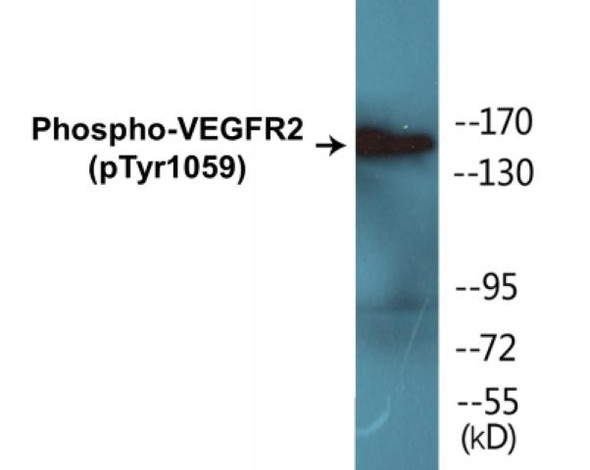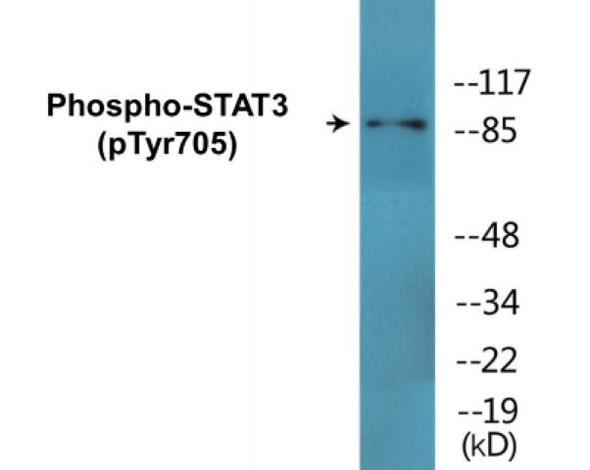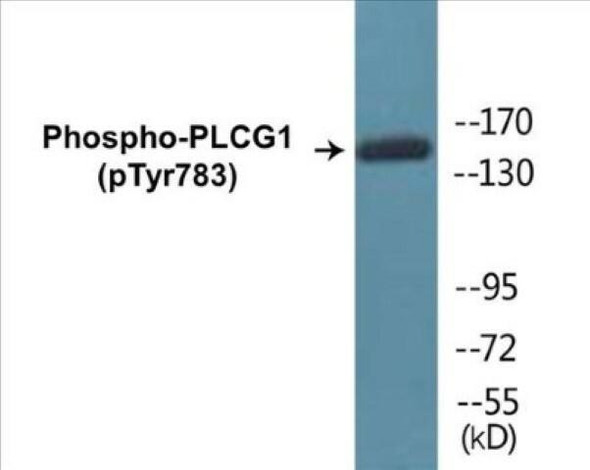Description
TIE2 (Phospho-Tyr1108) Cell-Based ELISA Kit
The TIE2 (Phospho-Tyr1108) Cell-Based ELISA Kit is a convenient, lysate- free, high throughput and sensitive assay kit that can monitor TIE2 phosphorylation and expression profile in cells. The kit can be used for measuring the relative amounts of phosphorylated TIE2 in cultured cells as well as screening for the effects that various treatments, inhibitors (ie. siRNA or chemicals), or activators have on TIE2 phosphorylation.
How does our TIE2 (Phospho-Tyr1108) Fluorometric Cell-Based ELISA Kit work?
Qualitative determination of TIE2 (Phospho-Tyr1108) concentration is achieved by an indirect ELISA format. In essence, TIE2 (Phospho-Tyr1108) is captured by TIE2 (Phospho-Tyr1108)-specific primary (1°) antibodies while Dye 1-conjugated and Dye 2-conjugated secondary (2°) antibodies bind the Fc region of the 1° antibody. Through this binding, the dye conjugated to the 2° antibody can emit light at a certain wavelength given proper excitation, hence allowing for a fluorometric detection method. Due to the qualitative nature of the Cell-Based ELISA, multiple normalization methods are needed:
| 1. | A monoclonal antibody specific for human GAPDH is included to serve as an internal positive control in normalizing the target RFU values. |
| 2. | An antibody against the nonphosphorylated counterpart of TIE2 (Phospho-Tyr1108) is also provided for normalization purposes. The RFU values obtained for non-phosphorylated TIE2 can be used to normalize the RFU value for phosphorylated TIE2. |
TIE2 (Phospho-Tyr1108) Fluorometric Cell-Based ELISA Kit -Information
| Product Name: | TIE2 (Phospho-Tyr1108)Fluorometric Cell-Based ELISA Kit |
| Product Code/SKU: | FBCAB00035 |
| Description: | The TIE2 (Phospho-Tyr1108) Fluorometric Cell-Based Phospho ELISA Kit is a convenient, lysate-free, high throughput and sensitive assay kit that can monitor TIE2 (Phospho-Tyr1108) protein phosphorylation and expression profile in cells. The kit can be used for measuring the relative amounts of phosphorylated TIE2 (Phospho-Tyr1108) in cultured cells as well as screening for the effects that various treatments, inhibitors (ie. siRNA or chemicals, or activators have on TEK phosphorylation. |
| Dynamic Range: | > 5000 Cells |
| Detection Method: | Fluorometric |
| Storage/Stability: | 4°C/6 Months |
| Reactivity: | Human, Mouse |
| Assay Type: | Cell-Based ELISA |
| Database Links: | Gene ID: 7010, UniProt ID: Q02763, OMIM #: 600195/600221, Unigene #: Hs.89640 |
| Format: | Two 96-Well Plates |
| NCBI Gene Symbol: | TEK |
| Sub Type: | Phospho |
| Target Name: | Phospho-TIE2 (Tyr1108) |
Kit Principle
Figure: Schematic representation of Assay Genie Cell-Based Fluorometric ELISA principle
Kit components | Quantity |
| 96-Well Black Cell CultureClear-Bottom Microplate | 2 plates |
| 10X TBS | 24 ml |
| Quenching Buffer | 24 ml |
| Blocking Buffer | 50 ml |
| 15X Wash Buffer | 50 ml |
| Primary Antibody Diluent | 12 ml |
| 100x Anti-Phospho Target Antibody | 60 µl |
| 100x Anti-Target Antibody | 60 µl |
| Anti-GAPDH Antibody | 110 µl |
| Dye-1 Conjugated Anti-Rabbit IgG Antibody | 6 ml |
| Dye-2 Conjugated Anti-Mouse IgG Antibody | 6 ml |
| Adhesive Plate Seals | 2 seals |
Additional equipment and materials required
The following materials and/or equipment are NOT provided in this kit but are necessary to successfully conduct the experiment:
- Fluorescent plate reader with two channels at Ex/Em: 651/667 and 495/521
- Micropipettes capable of measuring volumes from 1 µl to 1 ml
- Deionized or sterile water (ddH2O)
- 37% formaldehyde (Sigma Cat# F-8775) or formaldehyde from other sources
- Squirt bottle, manifold dispenser, multichannel pipette reservoir or automated microplate washer
- Graph paper or computer software capable of generating or displaying logarithmic functions
- Absorbent papers or vacuum aspirator
- Test tubes or microfuge tubes capable of storing ≥1 ml
- Poly-L-Lysine (Sigma Cat# P4832 for suspension cells)
- Orbital shaker (optional)
Kit Protocol
This is a summarized version of the kit protocol. Please view the technical manual of this kit for information on sample preparation, reagent preparation and plate lay out.
| 1. | Seed 200 µl of desired cell concentration in culture medium into each well of the 96-well plates. For suspension cells and loosely attached cells, coat the plates with 100 µl of 10 µg/ml Poly-L-Lysine (not included) to each well of a 96-well plate for 30 minutes at 37°C prior to adding cells. |
| 2. | Incubate the cells for overnight at 37°C, 5% CO2. |
| 3. | Treat the cells as desired. |
| 4. | Remove the cell culture medium and rinse with 200 µl of 1x TBS, twice. |
| 5. | Fix the cells by incubating with 100 µl of Fixing Solution for 20 minutes at room temperature. The 4% formaldehyde is used for adherent cells and 8% formaldehyde is used for suspension cells and loosely attached cells. |
| 6. | Remove the Fixing Solution and wash the plate 3 times with 200 µl 1x Wash Buffer for 3 minutes. The plate can be stored at 4°C for a week. |
| 7. | Add 100 µl of Quenching Buffer and incubate for 20 minutes at room temperature. |
| 8. | Wash the plate 3 times with 1x Wash Buffer for 3 minutes each time. |
| 9. | Dispense 200 µl of Blocking Buffer and incubate for 1 hour at room temperature. |
| 10. | Wash 3 times with 200 µl of 1x Wash Buffer for 3 minutes each time. |
| 11. | Add 50 µl of Primary Antibody Mixture P to corresponding wells for TIE2 (Phospho-Tyr1108) detection. Add 50 µl of Primary Antibody Mixture NP to the corresponding wells for total TIE2 detection. Cover the plate with parafilm and incubate for 16 hours (overnight) at 4°C. If the target expression is known to be high, incubate for 2 hours at room temperature. |
| 12. | Wash 3 times with 200 µl of 1x Wash Buffer for 3 minutes each time. |
| 13. | Add 50 ul of Secondary Antibody Mixture to corresponding wells and incubate for 1.5 hours at room temperature in the dark. |
| 14. | Wash 3 times with 200 µl of 1x Wash Buffer for 3 minutes each time. |
| 15. | Read the plate(s) at Ex/Em: 651/667 (Dye 1) and 495/521 (Dye 2). Shield plates from direct light exposure. |
| 16. | Wash 3 times with 200 µl of 1x Wash Buffer for 5 minutes each time. |
TIE2 (Phospho-Tyr1108) - Protein Information
| UniProt Protein Function: | TIE2: a receptor tyrosine kinase of the Tie family. Receptor for angiopoietin 1. Expressed almost exclusively in endothelial cells. May constitute the earliest mammalian endothelial cell lineage marker. Appears to be critical for endothelial cell-smooth muscle cell communication in venous morphogenesis. TEK is closely related to the TIE receptor tyrosine kinase. |
| UniProt Protein Details: | Protein type:Protein kinase, TK; Protein kinase, tyrosine (receptor); EC 2.7.10.1; Kinase, protein; Membrane protein, integral; TK group; Tie family Chromosomal Location of Human Ortholog: 9p21 Cellular Component: microvillus; focal adhesion; cell surface; basolateral plasma membrane; integral to plasma membrane; extracellular region; actin filament; intercellular junction; lipid raft; perinuclear region of cytoplasm; apical plasma membrane; stress fiber; basal plasma membrane; plasma membrane Molecular Function:protein binding; growth factor binding; protein-tyrosine kinase activity; receptor activity; transmembrane receptor protein tyrosine kinase activity; ATP binding; protein kinase activity Biological Process: response to peptide hormone stimulus; peptidyl-tyrosine phosphorylation; response to cAMP; heart development; protein amino acid autophosphorylation; cell-matrix adhesion; positive regulation of cytokine secretion during immune response; signal transduction; cell-cell adhesion; cell-cell signaling; positive regulation of focal adhesion formation; angiogenesis; endochondral ossification; organ regeneration; Tie receptor signaling pathway; regulation of establishment and/or maintenance of cell polarity; positive regulation of phosphoinositide 3-kinase activity; positive regulation of peptidyl-serine phosphorylation; protein oligomerization; positive regulation of phosphoinositide 3-kinase cascade; positive regulation of protein kinase B signaling cascade; negative regulation of angiogenesis; positive regulation of angiogenesis; positive regulation of protein import into nucleus; response to estrogen stimulus; negative regulation of inflammatory response; endothelial cell proliferation; response to hypoxia; positive regulation of endothelial cell proliferation; regulation of vascular permeability; sprouting angiogenesis; positive regulation of protein amino acid phosphorylation; blood coagulation; leukocyte migration; transmembrane receptor protein tyrosine kinase signaling pathway; negative regulation of apoptosis Disease: Venous Malformations, Multiple Cutaneous And Mucosal |
| NCBI Summary: | The TEK receptor tyrosine kinase is expressed almost exclusively in endothelial cells in mice, rats, and humans. This receptor possesses a unique extracellular domain containing 2 immunoglobulin-like loops separated by 3 epidermal growth factor-like repeats that are connected to 3 fibronectin type III-like repeats. The ligand for the receptor is angiopoietin-1. Defects in TEK are associated with inherited venous malformations; the TEK signaling pathway appears to be critical for endothelial cell-smooth muscle cell communication in venous morphogenesis. TEK is closely related to the TIE receptor tyrosine kinase. [provided by RefSeq, Jul 2008] |
| UniProt Code: | Q02763 |
| NCBI GenInfo Identifier: | 218511853 |
| NCBI Gene ID: | 7010 |
| NCBI Accession: | Q02763.2 |
| UniProt Secondary Accession: | Q02763,Q5TCU2, Q8IV34, A8K6W0, B4DH20, B4DHD3, D3DRK5 E7EWI2, |
| UniProt Related Accession: | Q02763 |
| Molecular Weight: | 60.2kD |
| NCBI Full Name: | Angiopoietin-1 receptor |
| NCBI Synonym Full Names: | TEK tyrosine kinase, endothelial |
| NCBI Official Symbol: | TEK |
| NCBI Official Synonym Symbols: | TIE2; VMCM; TIE-2; VMCM1; CD202B |
| NCBI Protein Information: | angiopoietin-1 receptor; hTIE2; p140 TEK; soluble TIE2 variant 1; soluble TIE2 variant 2; endothelial tyrosine kinase; tyrosine-protein kinase receptor TEK; tunica interna endothelial cell kinase; tyrosine-protein kinase receptor TIE-2; tyrosine kinase with Ig and EGF homology domains-2 |
| UniProt Protein Name: | Angiopoietin-1 receptor |
| UniProt Synonym Protein Names: | Endothelial tyrosine kinase; Tunica interna endothelial cell kinase; Tyrosine kinase with Ig and EGF homology domains-2; Tyrosine-protein kinase receptor TEK; Tyrosine-protein kinase receptor TIE-2; hTIE2; p140 TEK |
| Protein Family: | Angiopoietin-1 receptor |
| UniProt Gene Name: | TEK |
| UniProt Entry Name: | TIE2_HUMAN |







